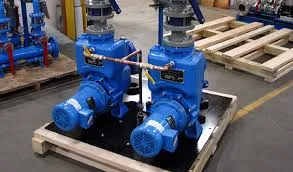Welsh
- Afrikaans
- Albanian
- Amharic
- Arabic
- Armenian
- Azerbaijani
- Basque
- Belarusian
- Bengali
- Bosnian
- Bulgarian
- Catalan
- Cebuano
- Corsican
- Croatian
- Czech
- Danish
- Dutch
- English
- Esperanto
- Estonian
- Finnish
- French
- Frisian
- Galician
- Georgian
- German
- Greek
- Gujarati
- Haitian Creole
- hausa
- hawaiian
- Hebrew
- Hindi
- Miao
- Hungarian
- Icelandic
- igbo
- Indonesian
- irish
- Italian
- Japanese
- Javanese
- Kannada
- kazakh
- Khmer
- Rwandese
- Korean
- Kurdish
- Kyrgyz
- Lao
- Latin
- Latvian
- Lithuanian
- Luxembourgish
- Macedonian
- Malgashi
- Malay
- Malayalam
- Maltese
- Maori
- Marathi
- Mongolian
- Myanmar
- Nepali
- Norwegian
- Norwegian
- Occitan
- Pashto
- Persian
- Polish
- Portuguese
- Punjabi
- Romanian
- Russian
- Samoan
- Scottish Gaelic
- Serbian
- Sesotho
- Shona
- Sindhi
- Sinhala
- Slovak
- Slovenian
- Somali
- Spanish
- Sundanese
- Swahili
- Swedish
- Tagalog
- Tajik
- Tamil
- Tatar
- Telugu
- Thai
- Turkish
- Turkmen
- Ukrainian
- Urdu
- Uighur
- Uzbek
- Vietnamese
- Welsh
- Bantu
- Yiddish
- Yoruba
- Zulu
Telephone: +86 13120555503
Email: frank@cypump.com
Medi . 28, 2024 18:06 Back to list
sewage ejection system
Understanding Sewage Ejection Systems
Sewage ejection systems play a crucial role in modern sanitation management, particularly in areas where gravity drainage is not feasible. These systems are designed to transport wastewater from homes and industrial buildings to the main sewer line. They are especially important in low-lying regions or basements where drainage relies on pumps rather than gravity.
At the heart of a sewage ejection system is the ejection pump, which is specifically designed to handle solid waste and sewage. Unlike standard sump pumps that only deal with water, sewage pumps are robust and equipped with grinder systems that can effectively break down solids. This capability is vital because sewage often contains materials that can clog or damage traditional pumps.
Typically, a sewage ejection system consists of several key components the pump, a holding tank (or basin), and the discharge piping. The holding tank collects effluent and stores it until the pump is activated. Once the liquid level in the tank rises to a certain point, the pump starts, propelling the sewage through the discharge pipes to the sewer system. Usually, these systems are built with a float switch mechanism that automatically turns the pump on and off, ensuring efficient operation without manual intervention.
sewage ejection system

Installation of a sewage ejection system requires careful consideration of local building codes and regulations. Professionals usually evaluate the unique characteristics of a property before recommending the appropriate system. Factors such as the distance to the sewer line, the elevation of the tank, and the expected volume of wastewater are all taken into account to ensure an effective and efficient setup.
Maintaining a sewage ejection system is essential for preventing issues such as backups and foul odors. Regular inspections and maintenance checks can help identify potential problems early. Homeowners should be aware of what can and cannot be flushed down the toilet or drains to avoid damaging the pump. Non-biodegradable items, such as wipes, fats, and other solids, can cause clogs and hinder the performance of the system.
In conclusion, sewage ejection systems are vital for effective wastewater management in properties where gravity drainage is not an option. Their ability to handle both liquid and solid waste makes them indispensable, especially in low-lying areas. Proper installation and maintenance of these systems can help ensure reliable performance, safeguarding public health and environmental standards. By understanding how these systems work, homeowners can make informed decisions that contribute to efficient sewage management and avoid potential mishaps.
-
ISG Series Vertical Pipeline Pump - Chi Yuan Pumps Co., LTD.|High Efficiency, Low Noise, Durable
NewsAug.02,2025
-
ISG Series Vertical Pipeline Pump - Chi Yuan Pumps | High Efficiency, Low Noise
NewsAug.02,2025
-
ISG Series Vertical Pipeline Pump- Chi Yuan Pumps Co., LTD.|High Efficiency&Compact Design
NewsAug.02,2025
-
Heavy-Duty Mining Sludge Pumps - Wear-Resistant Slurry Handling
NewsAug.02,2025
-
Horizontal Split Case Pump with GPT-4 Turbo | High Efficiency
NewsAug.01,2025
-
ISG Series Pipeline Pump - Chi Yuan Pumps | High Efficiency, Durable Design
NewsAug.01,2025










